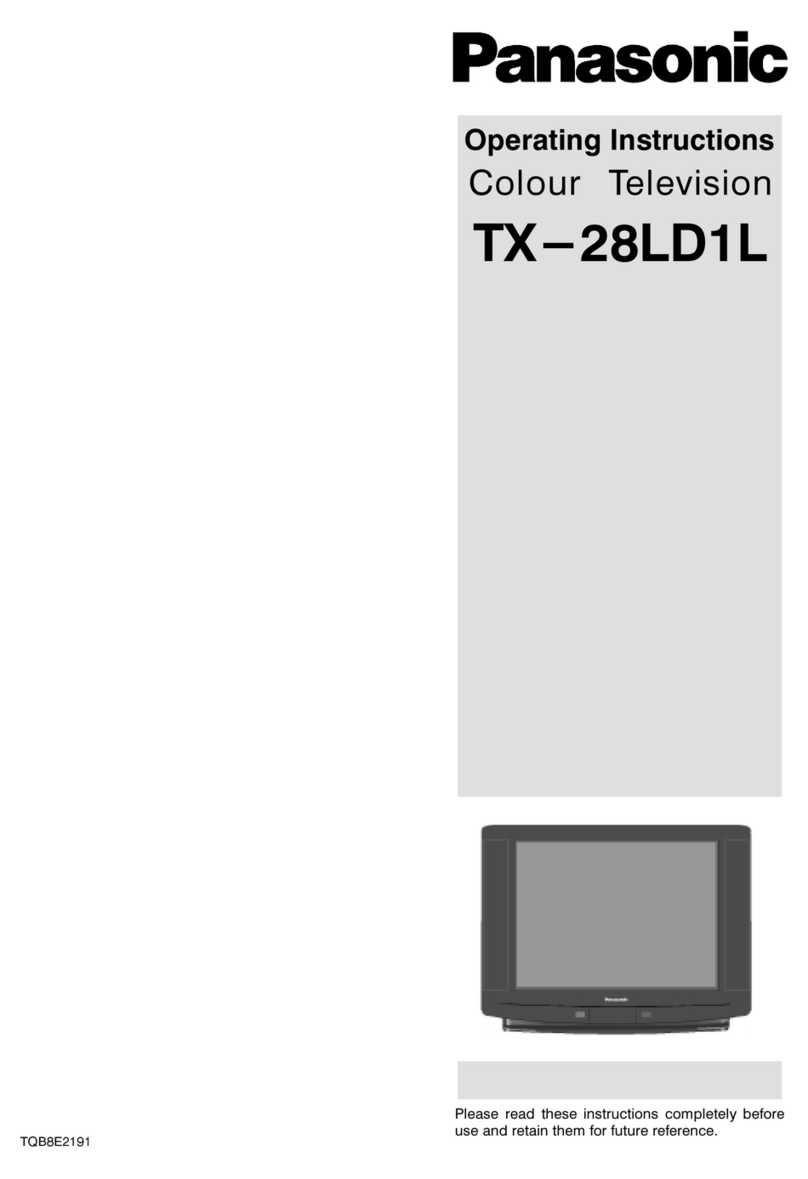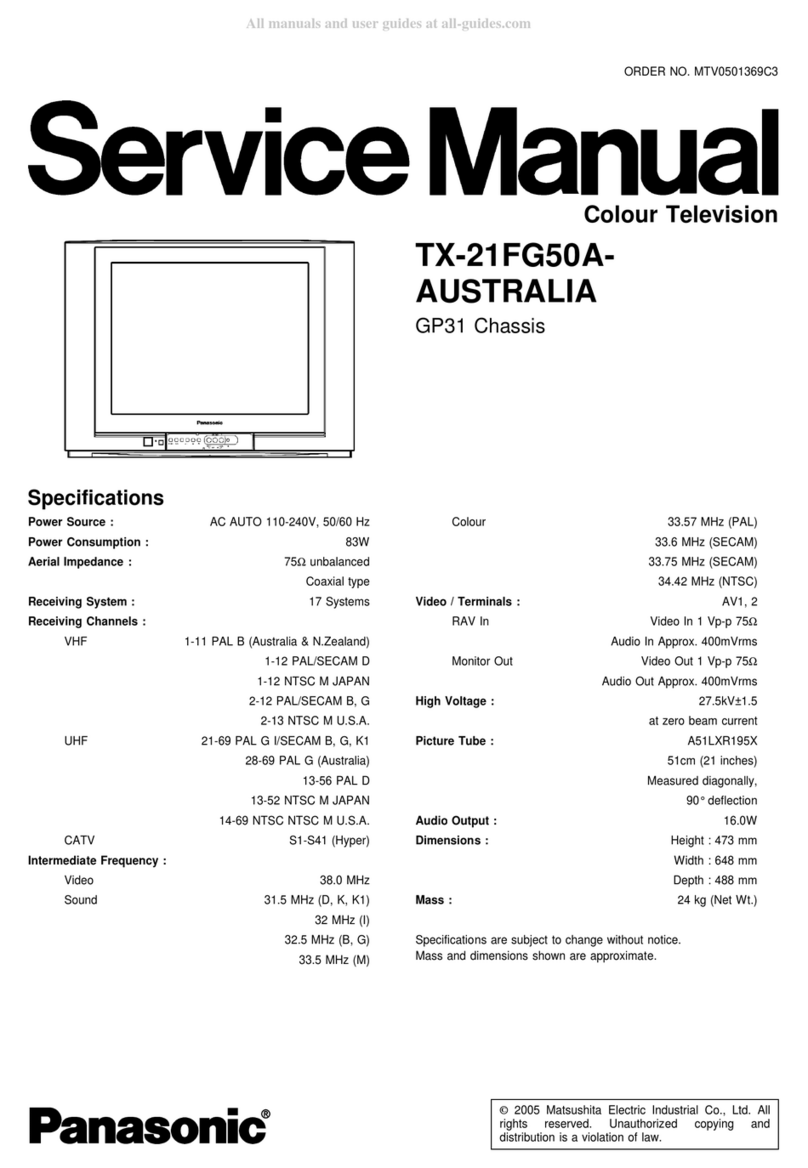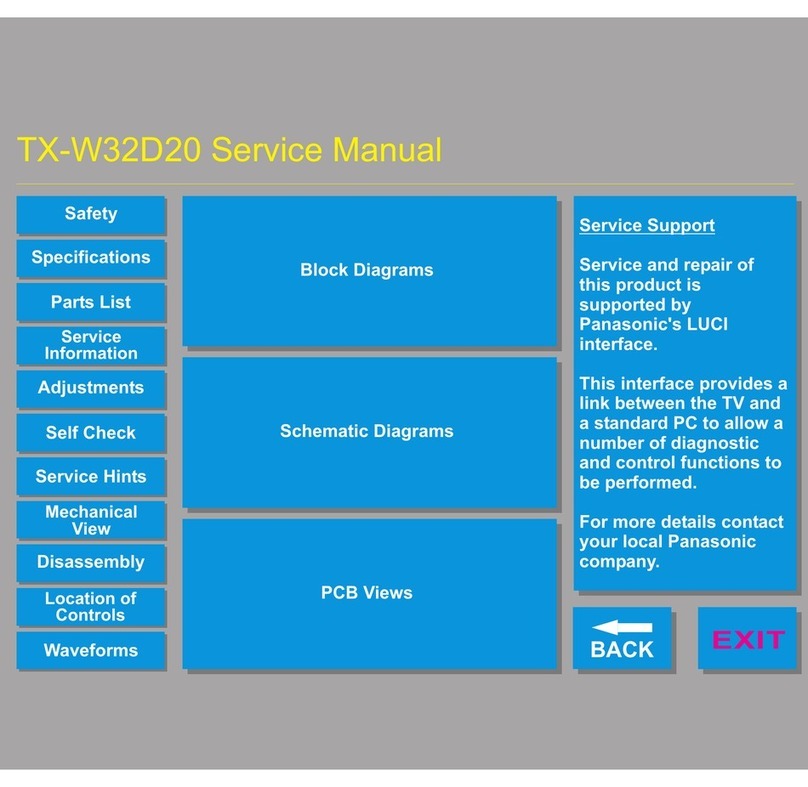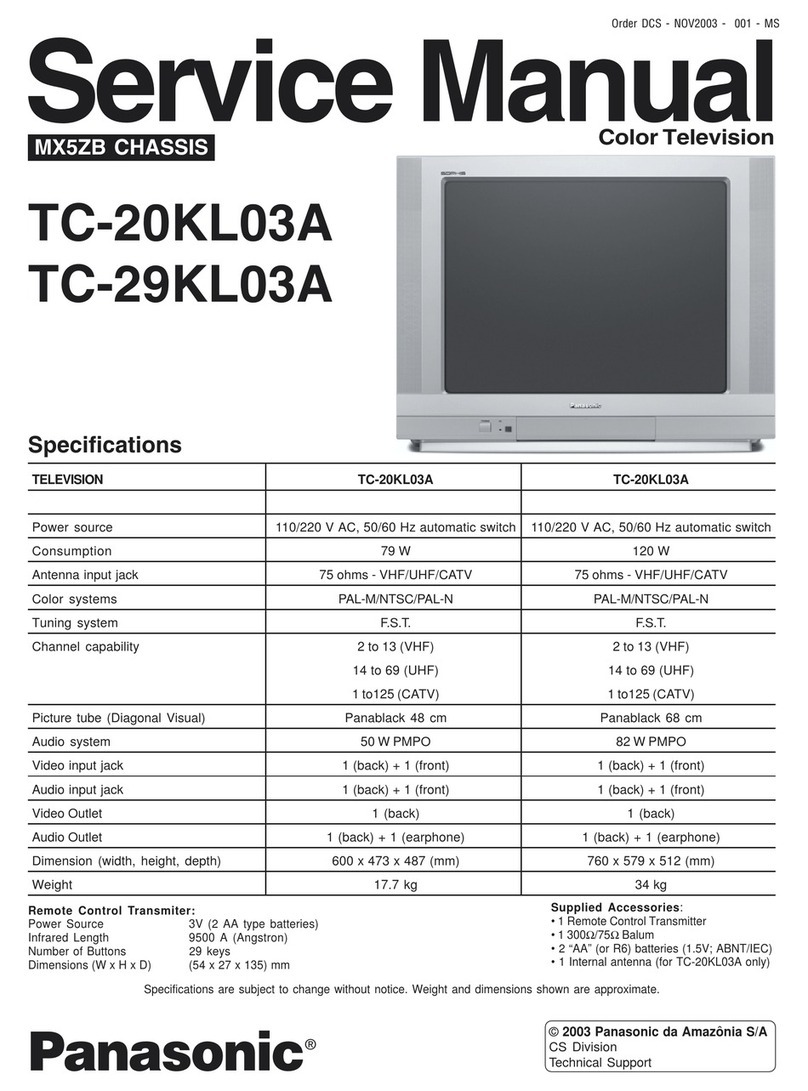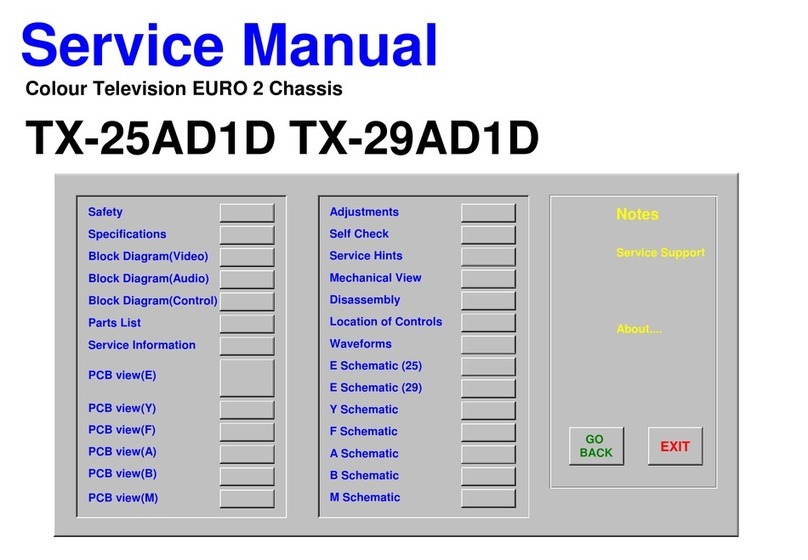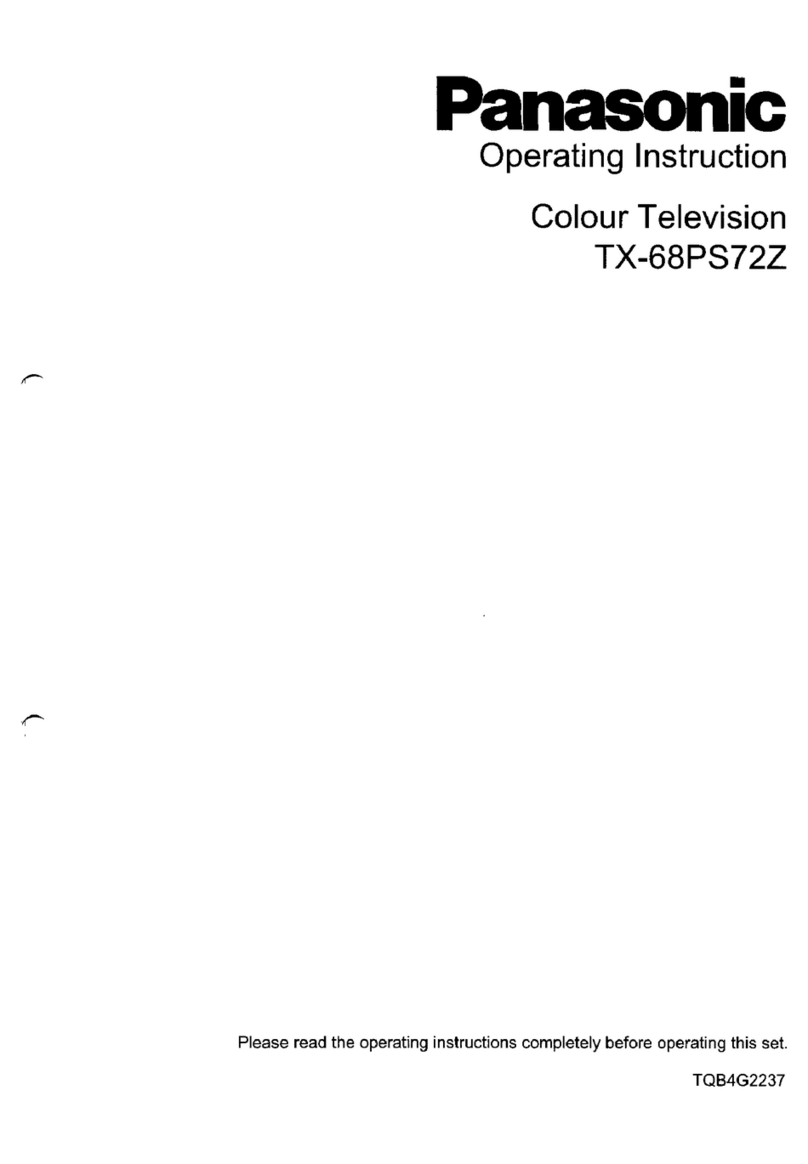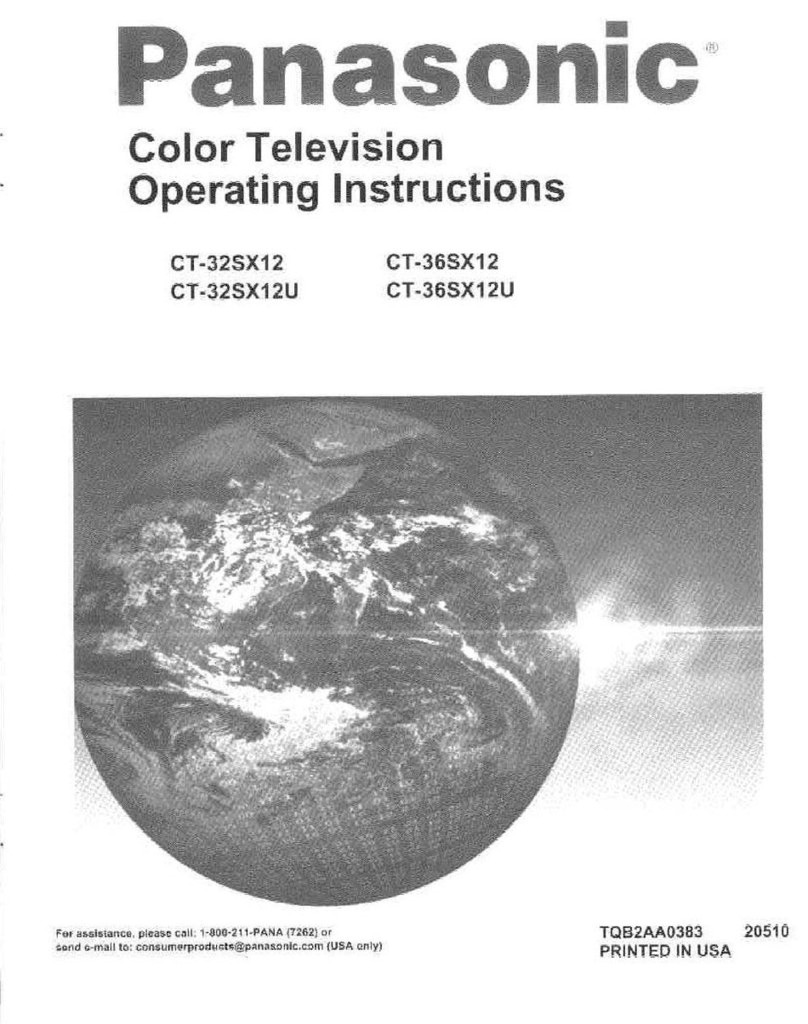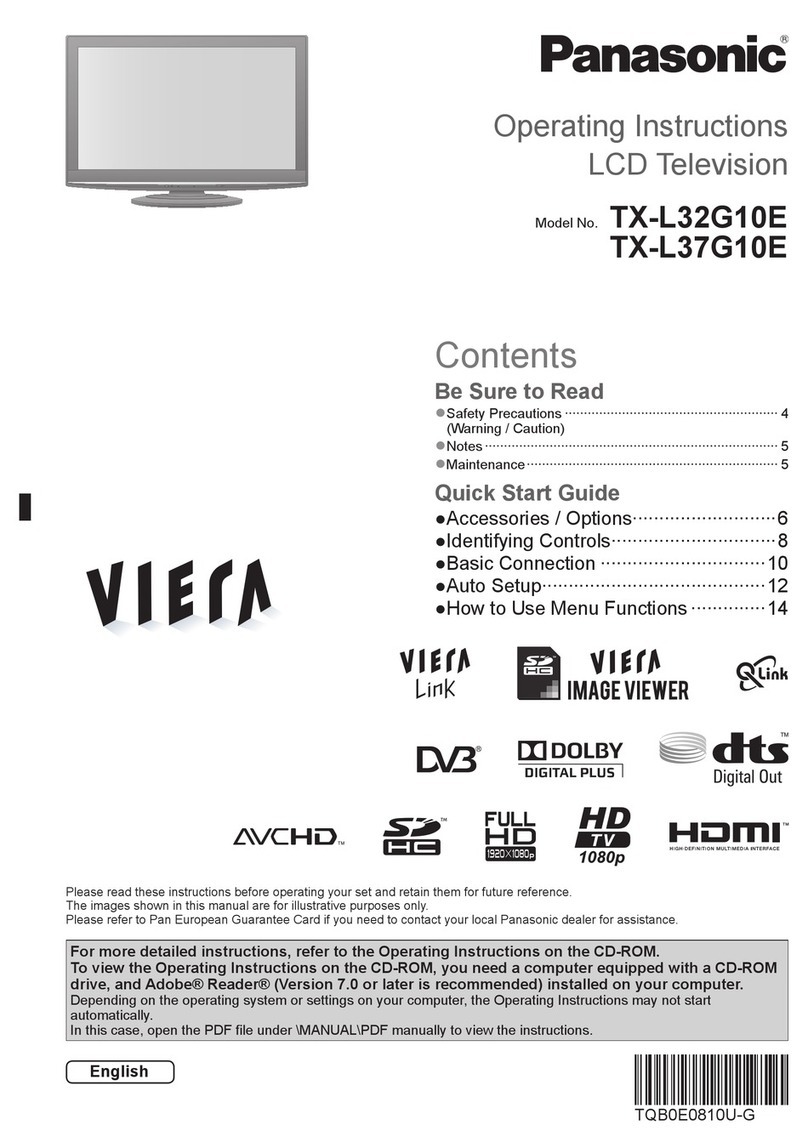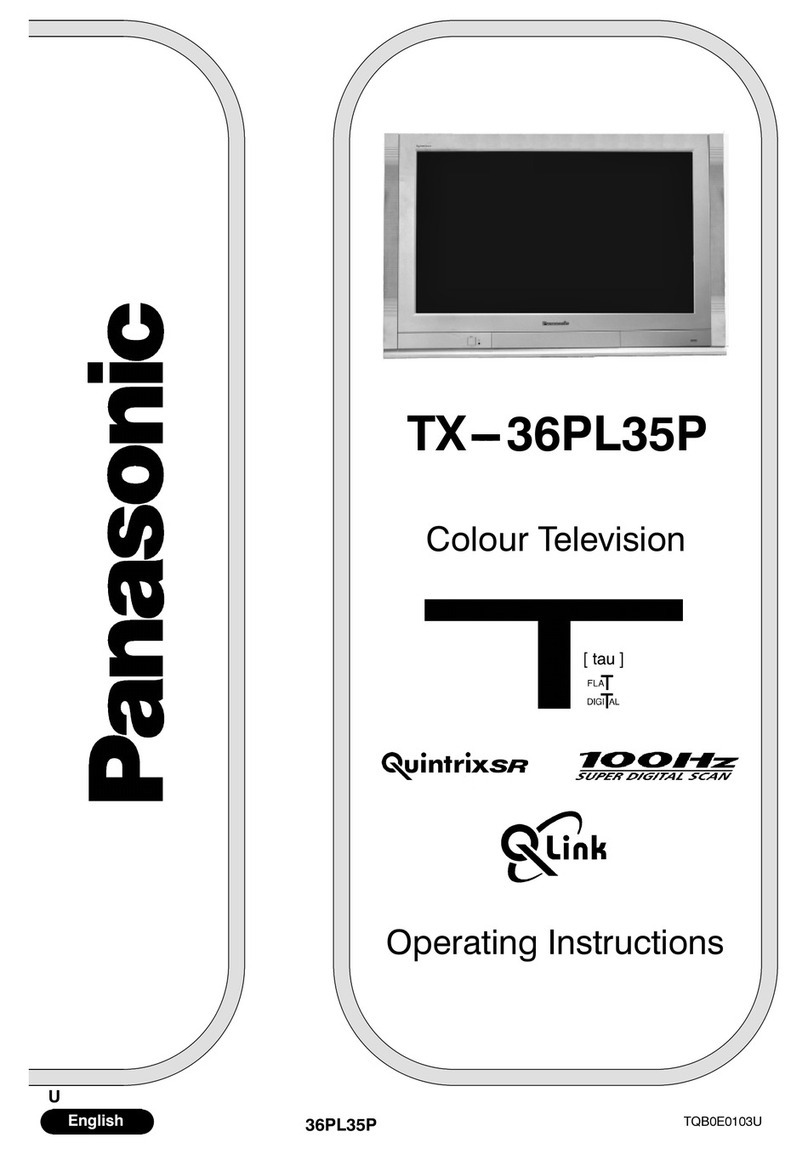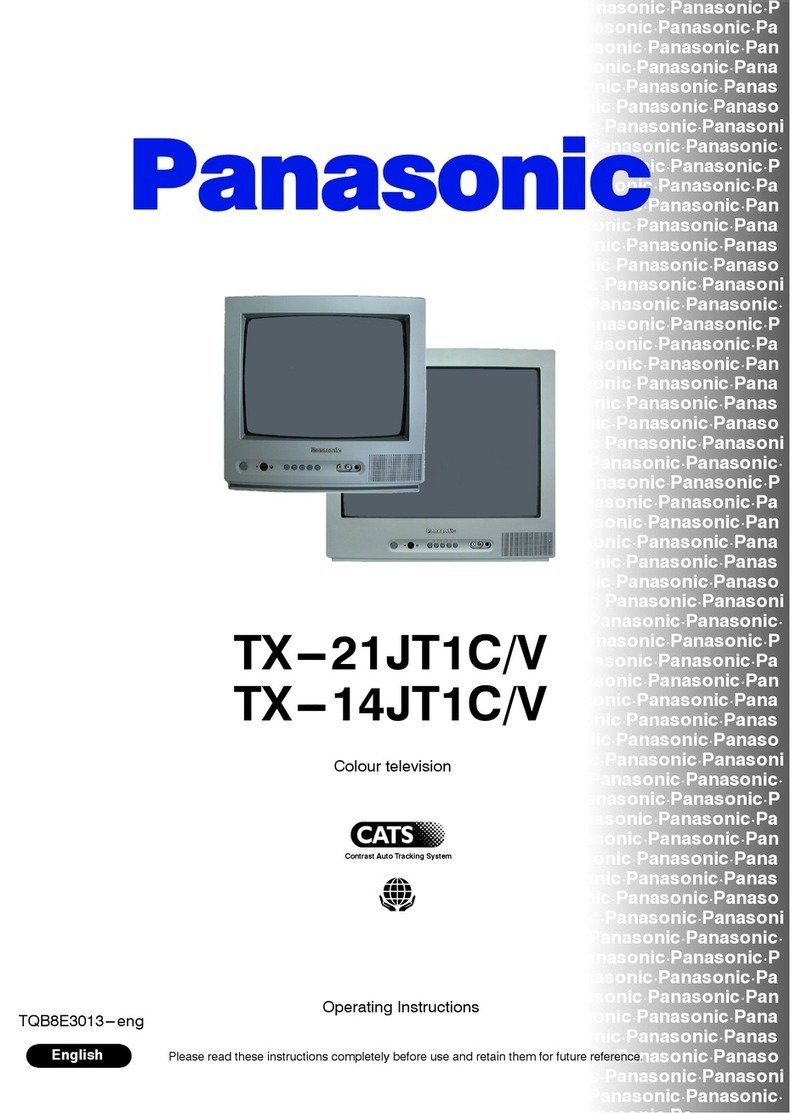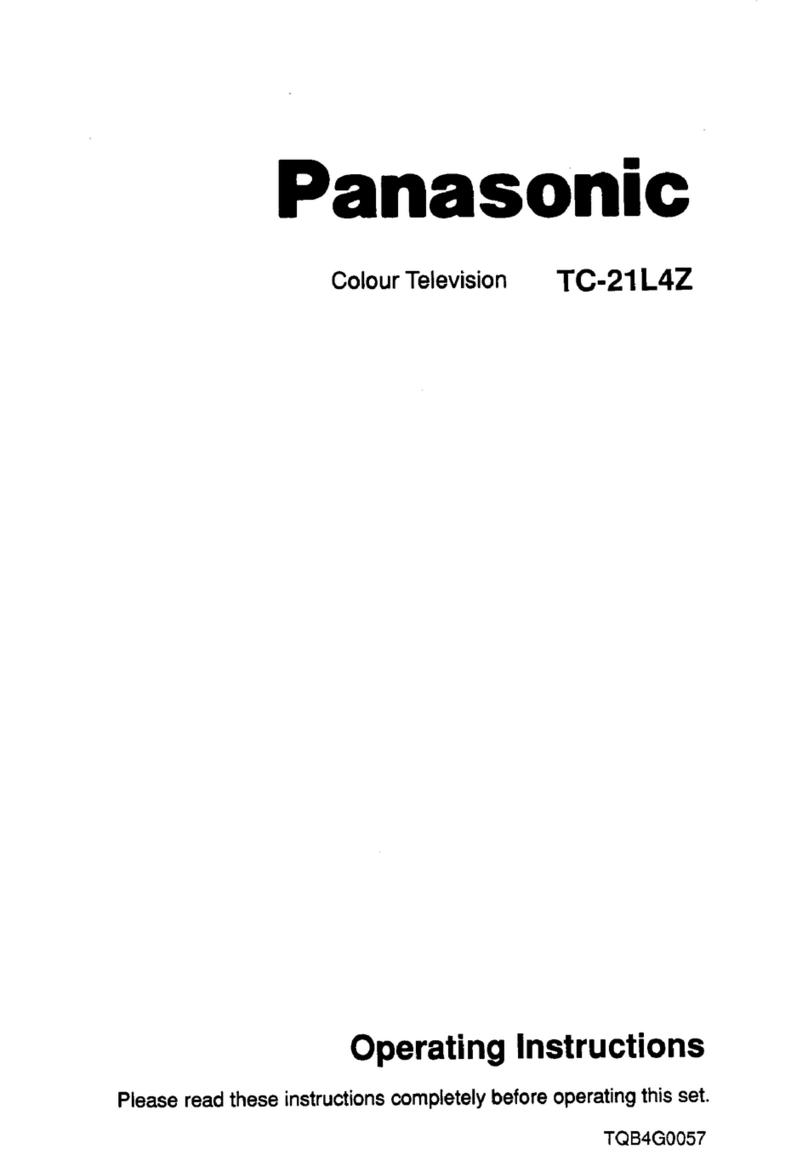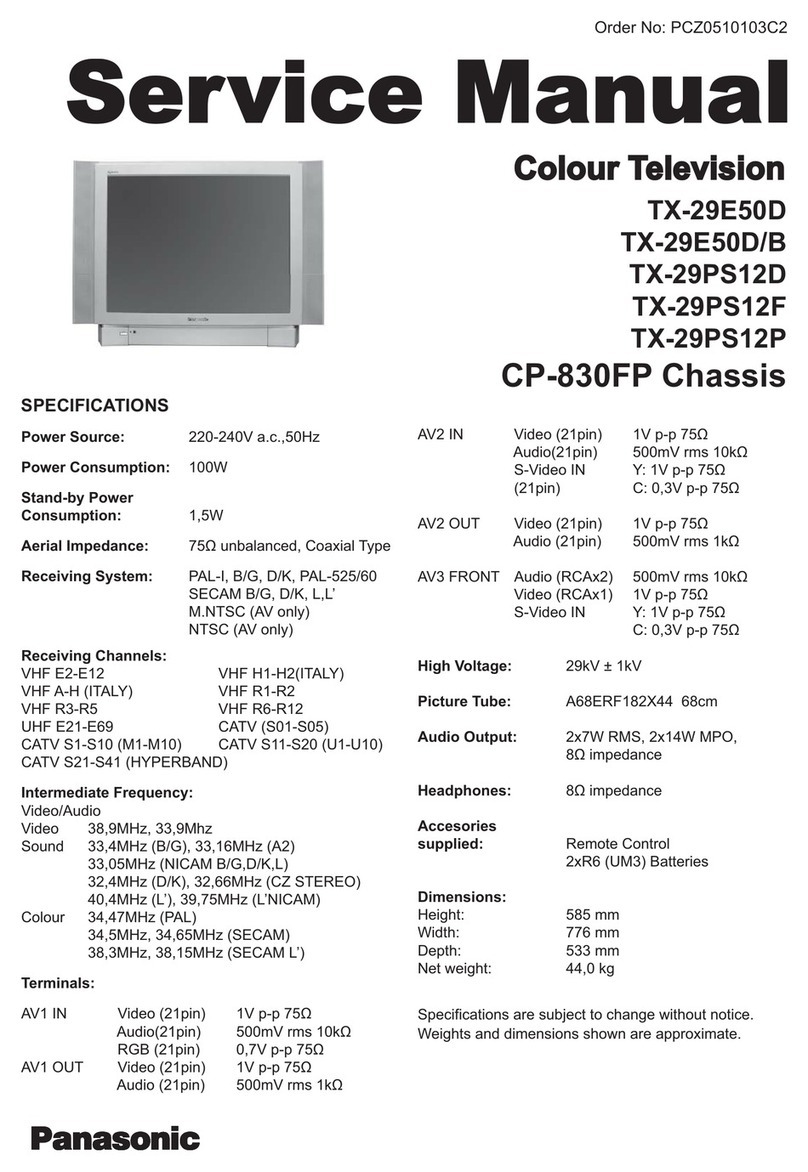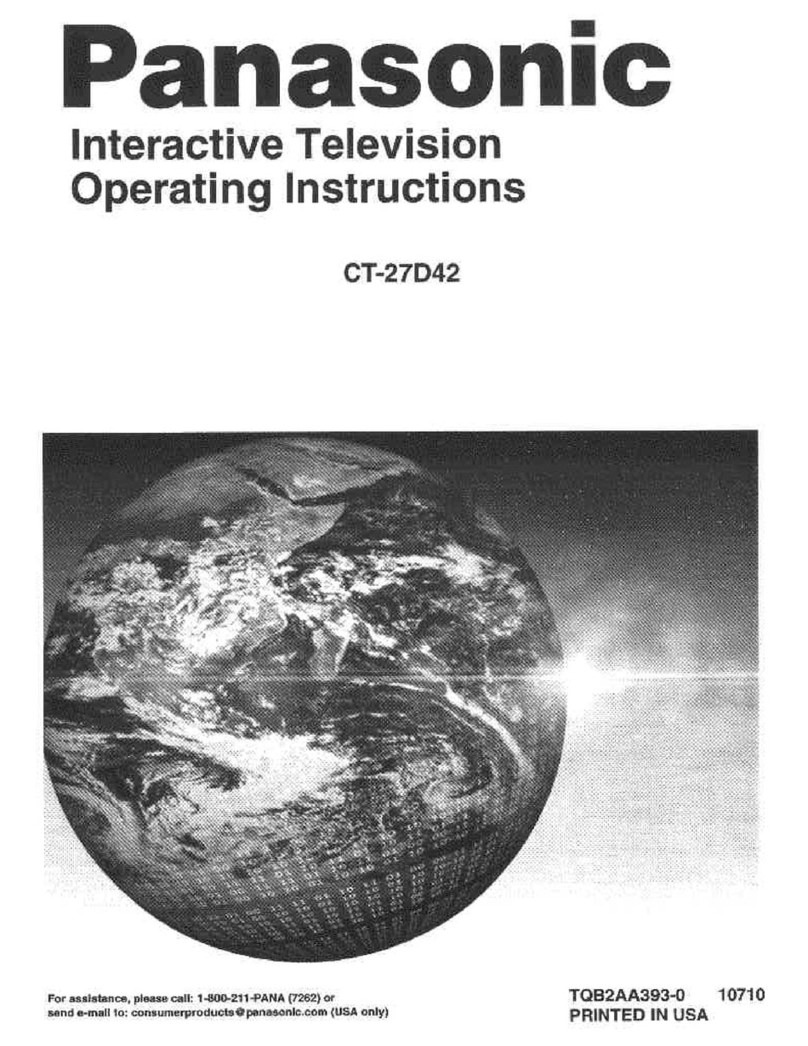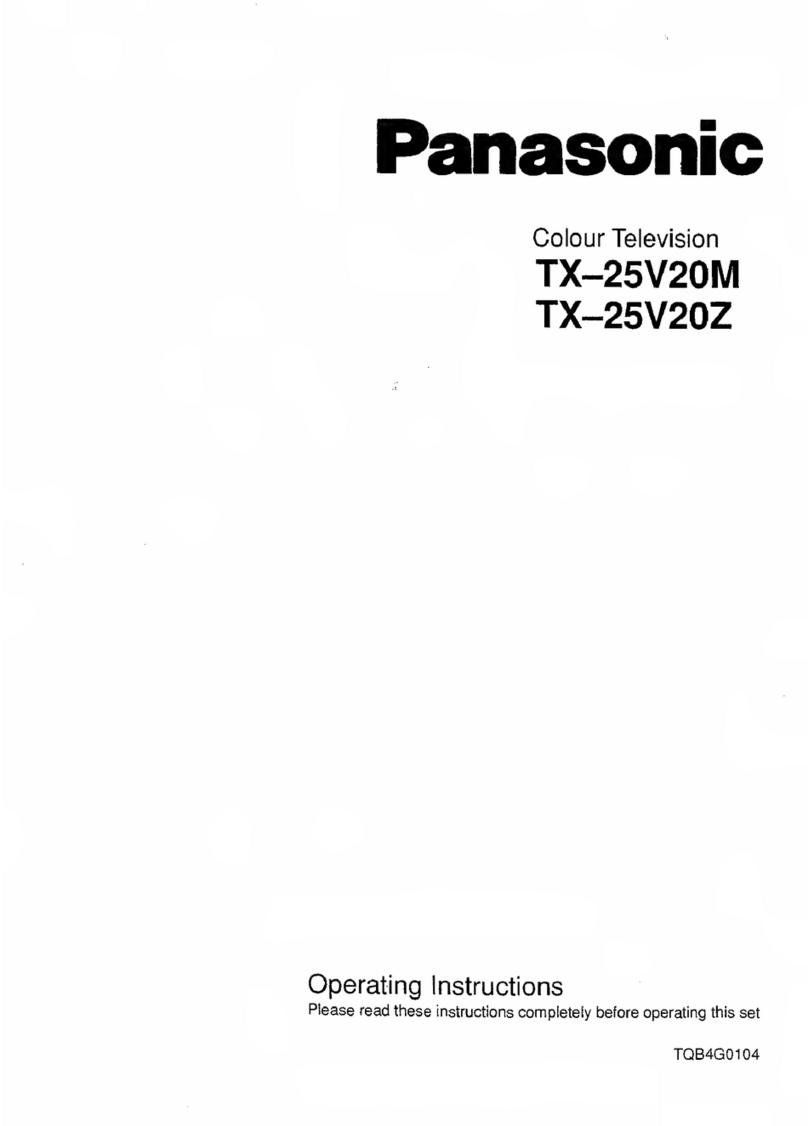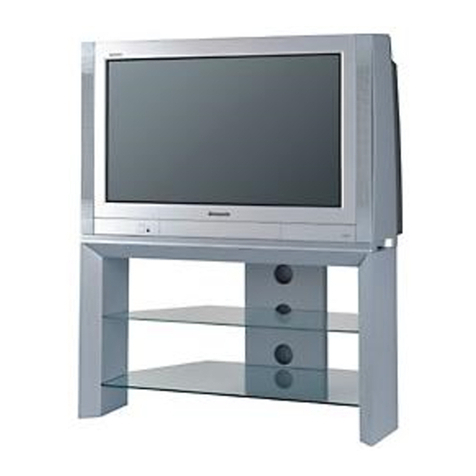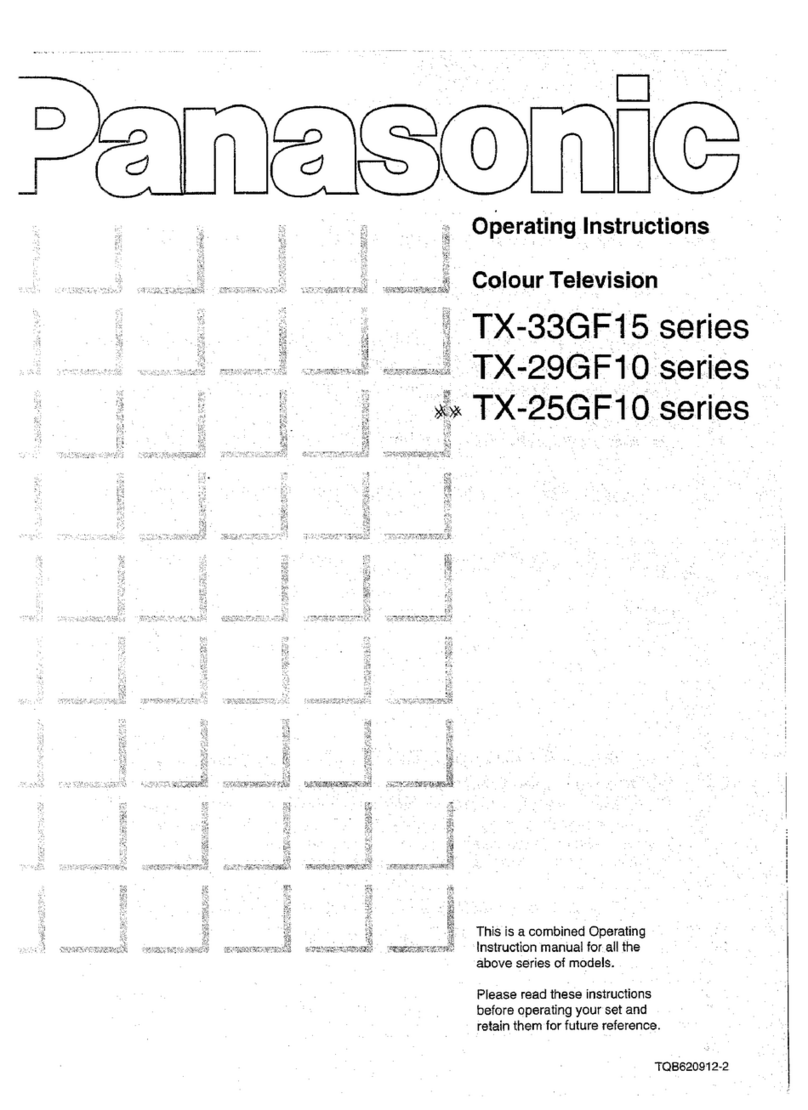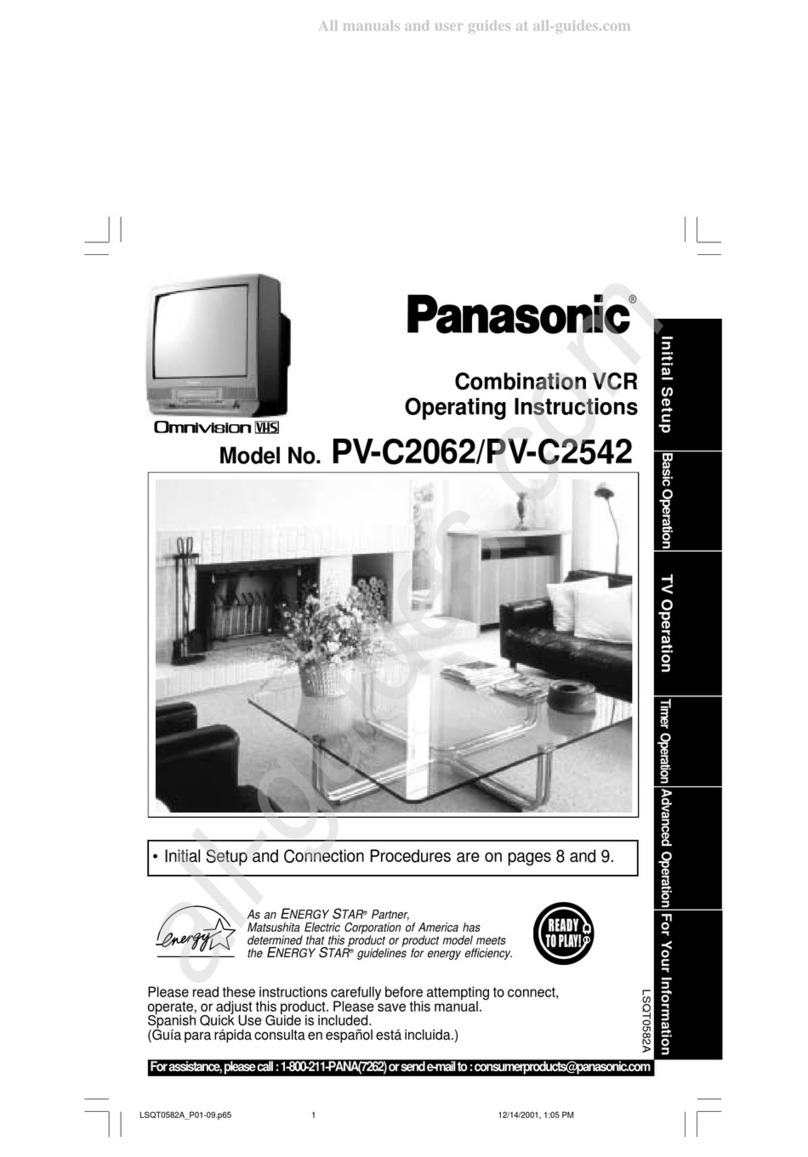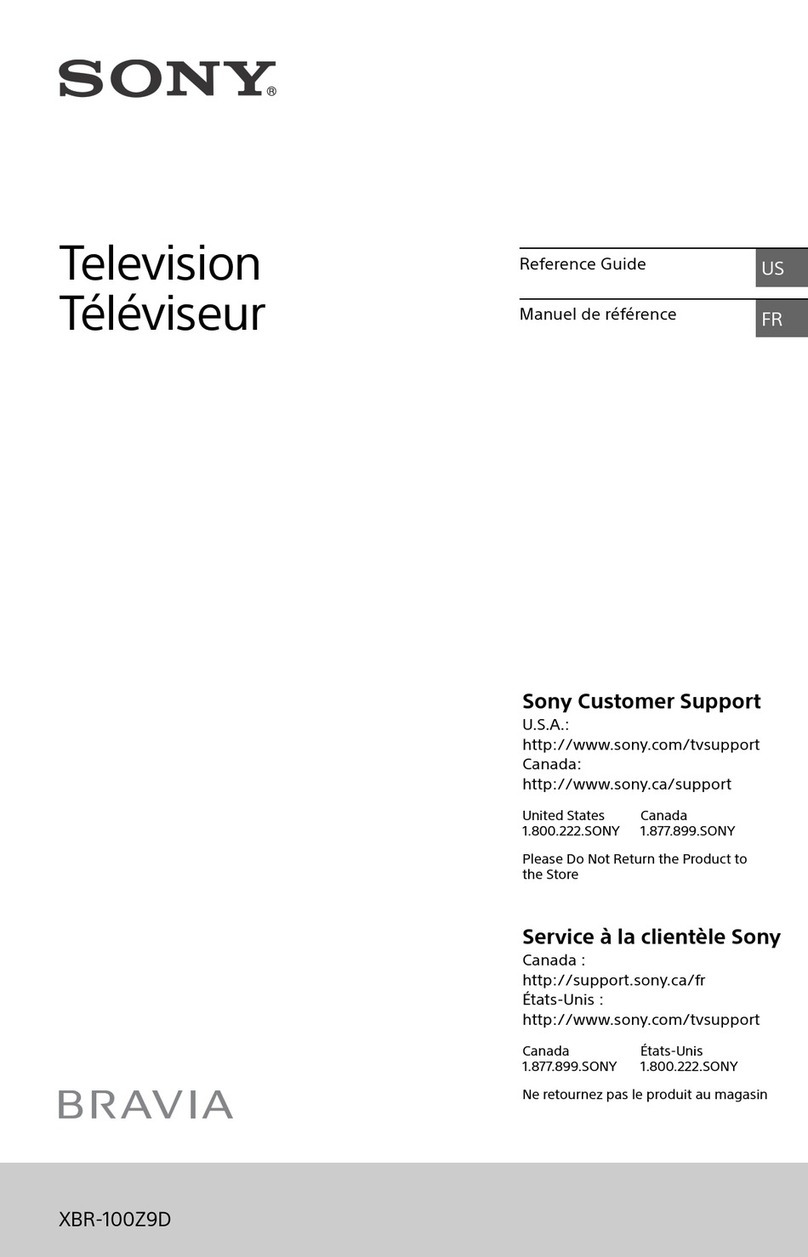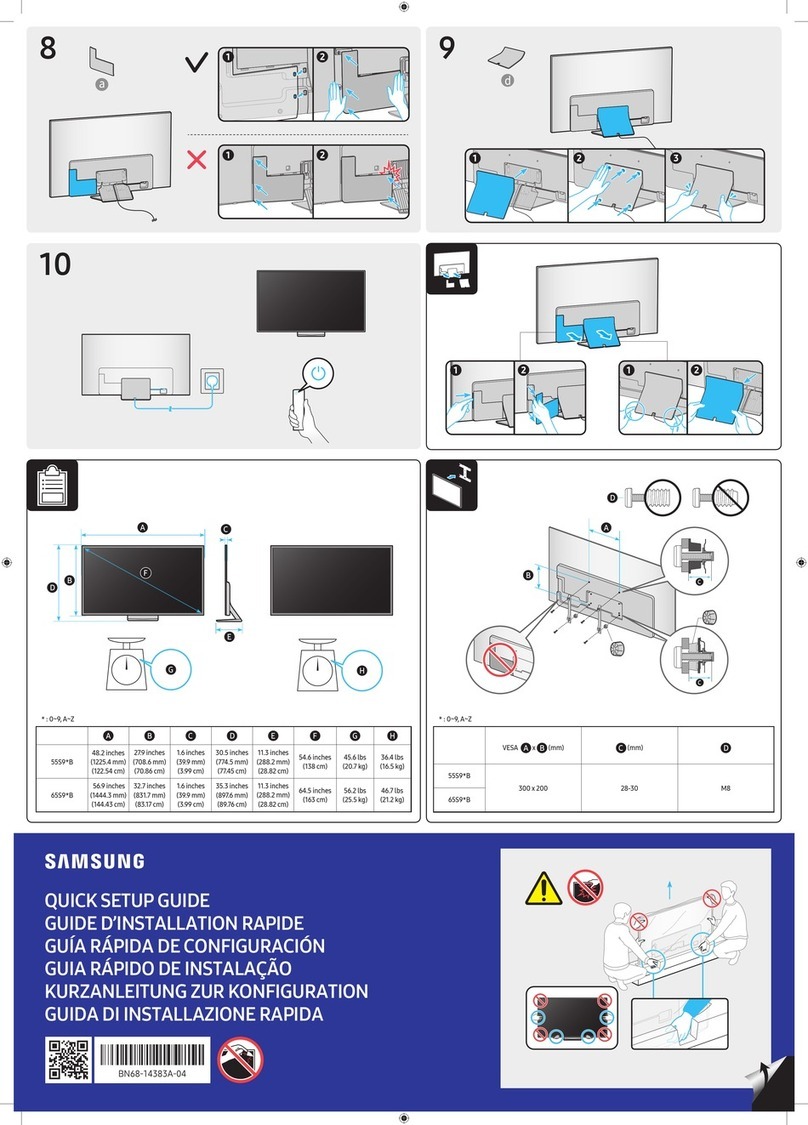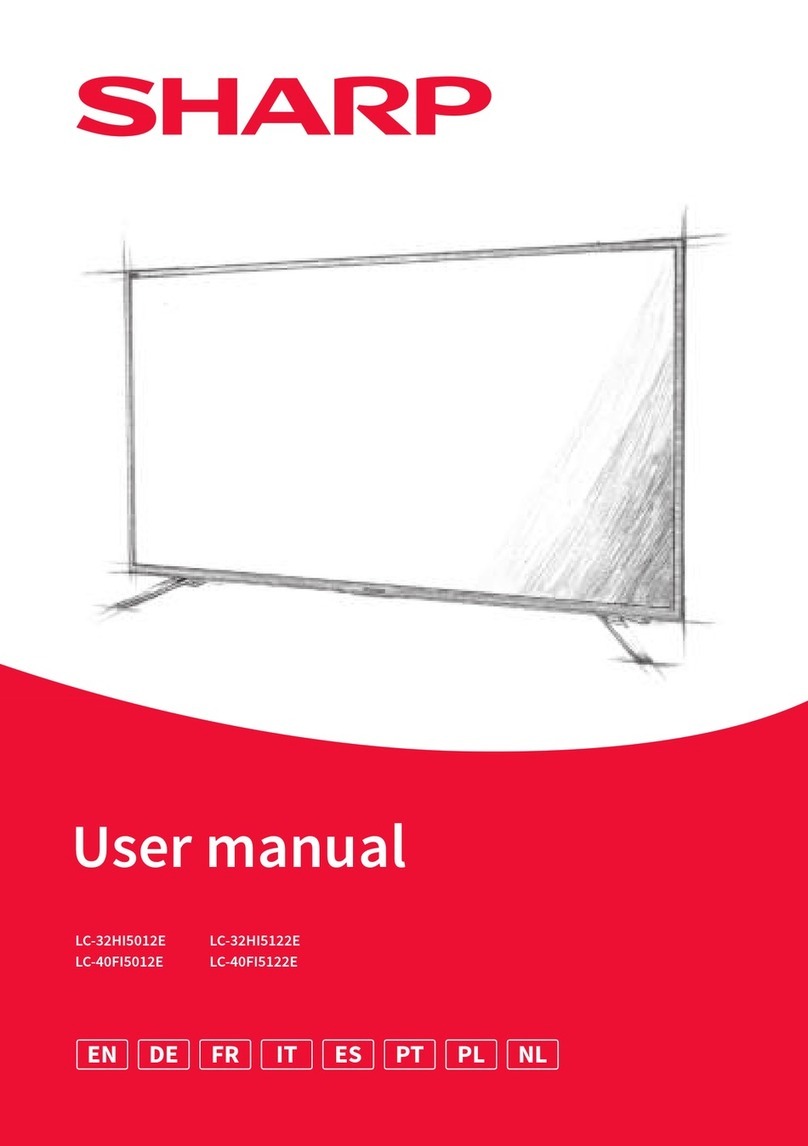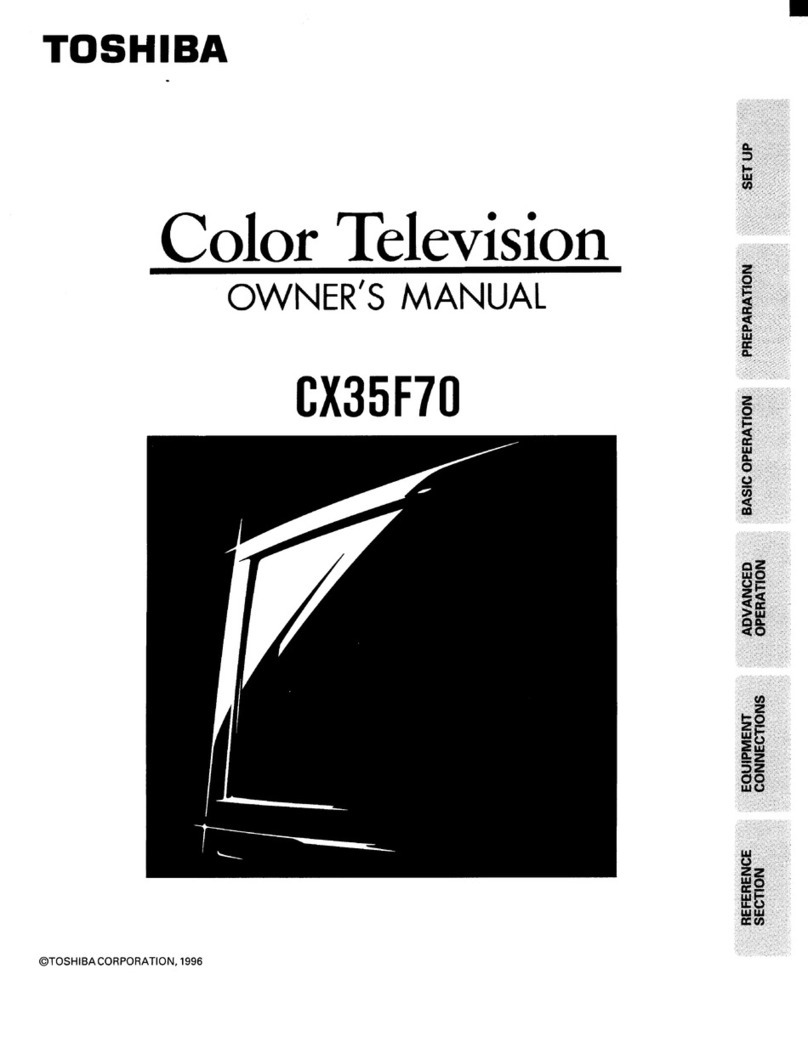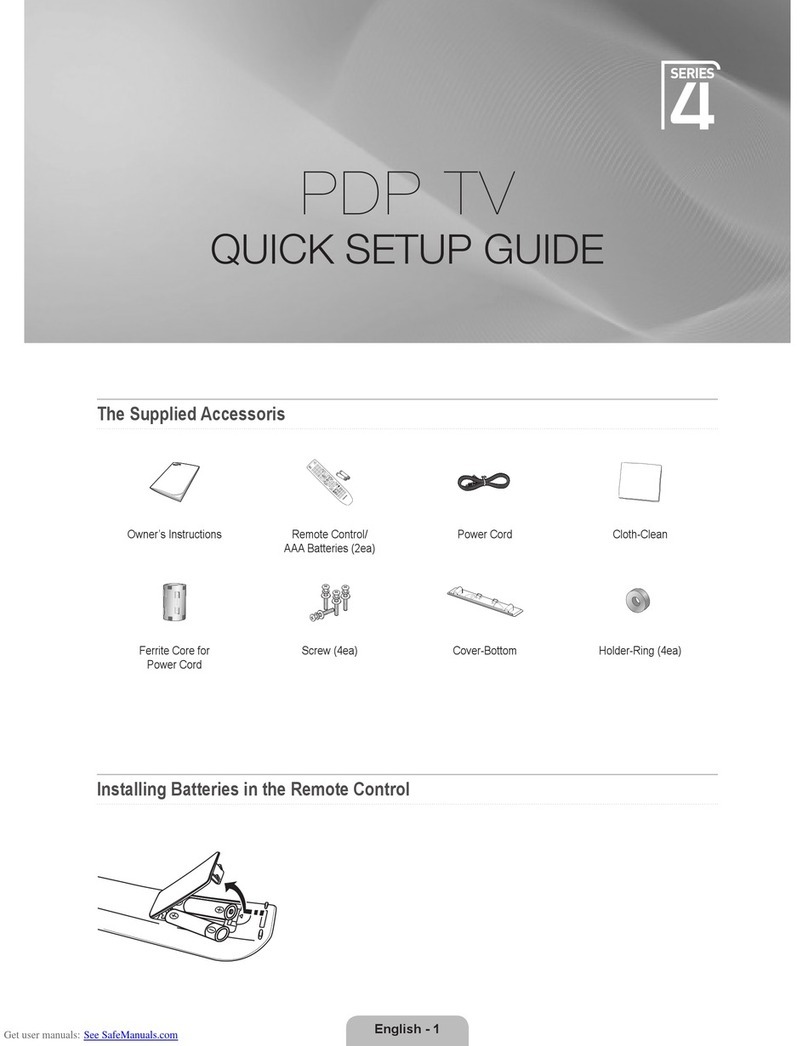CONTENTS
SAFETY PRECAUTIONS 2
LOCATION OF CONTROLS 4
SERVICE HINTS 4
ADJUSTMENTS 5
SELF CHECK 9
WAVEFORM PATTERN TABLE 10
CONDUCTOR VIEWS 11
BLOCK DIAGRAM 19
SCHEMATIC DIAGRAMS 22
PARTS LOCATION 29
REPLACEMENT PARTS LIST 30
SAFETY PRECAUTIONS
General Guide Lines
1. It is advisable to insert an isolation transformer in the AC
supply before servicing a hot chassis.
2. When servicing, observe the original lead dress in the high
voltage circuits. If a short circuit is found, replace all parts
which have been overheated or damaged by the short circuit.
3. After servicing, see that all the protective devices such as
insulation barriers, insulation papers, shields and isolation R-
C combinations are correctly installed.
4. When the receiver is not being used for a long period of time,
unplug the power cord from the AC outlet.
5. Potentials as high as 32kV are present when this receiver is in
operation. Operation of the receiver without the rear cover
involves the danger of a shock hazard from the receiver
power supply. Servicing should not be attempted by anyone
who is not familiar with the precautions necessary when
working on high voltage equipment. Always discharge the
anode of the picture to the chassis before handling the tube.
6. After servicing make the following leakage current checks to
prevent the customer from being exposed to shock hazards.
LEAKAGE CURRENT COLD CHECK
1. Unplug the AC cord and connect a jumper between the two
prongs of the plug.
2. Turn on the receiver's power switch.
3. Measure the resistance value with an ohmmeter, between
the jumpered AC plug and each exposed metallic cabinet
part on the receiver, such as screw heads, aerials ,
connectors, control shafts etc. When the exposed metallic
part has a return path to the chassis the reading should be
between 4M ohm and 20M ohm. When the exposed metal
does not have a return path to the chassis the reading must
be infinite.
CONTENTS
PRECAUTIONS DE SECURITE 2
EMPLACEMENT DES COMMANDES 4
SUGGESTIONS DE SERVICE 4
REGLAGÉS 5
AUTO TEST 9
TABLEAU DE MIRES DE FORMES D'ONDES 10
VUE DU CIRCUIT IMPRIMÉ 11
SCHEMA SYNOPTIQUE 19
DIAGRAMME SCHEMATIQUE 22
EMPLACEMENT DES PIECES 29
LISTE DES PIECES DE RECHANGE 30
PRECAUTIONS DE SECURITE
Conseils Generaux
1. Avant d'effectuer toute révision d'un châssis sous tension il
est recommandé d'installer un transformateur
d'isolation.
2. Il est important, lors des réparations, de conserver laposition
initial de tours les fils et faisceaux, surtout dans
le circuit de la haute tension. Remplacer toutes les pièces
affectées par la chaleur dégagée lors d'un cort-circuit.
3. Aprés les réparations, s'assurer que toutes les pièces
protectrices telles que barrières ou papiers
isolants,blindages et réseaux d'isolation R-C soient
convenablement placées
4. Il est préférable de débrancher le fil d'alimentation si la télé -
couleur ne doit pas être utilisée pendant un certain temps.
5. Une tension élevée, de l'odre de 32kV , est présente en
plusieurs endroits lorsque l,appareil est en circuit. Il y a
danger de chocs électriques lorsque le contact est établi en
absence du panneau arriére. Toute personne qui tente de
réparer cet appareil doit d'abord être consciente des
précautions à observer avant de travailler sur un circuit à
haute tension. Toujours décharger l'anode du tube
cathodique au châssis avant de manipuler.
6. Après tout réparation, on doit effectuer les tests de courant
de fuite dans le but d,éviter tout choc.
VERIFICATION DES COURANTS DE FUITE SANS
ALIMENTATION
1. Débrancher le fil d'alimentation et installer un fil STRAP entre
les deux broches de la fiche.
2. Placer l'interrupteur comme pour établir le contact sur
l'appareil.
3. Mesurer la résistance entre les branches de la fiche
d'alimentation et les pièces métalliques visibles telles que
têtes de vis, antennes, arbre des commandes, support des
poignées, etc. Certaines de ces pièces sont en contact avec
le châssis et la rèsistance measurée devrait se siture entre
4MW, et 20MW. La résistance des pièces qui ne sont pas en
contact avec le châssis doit être infinie1.


